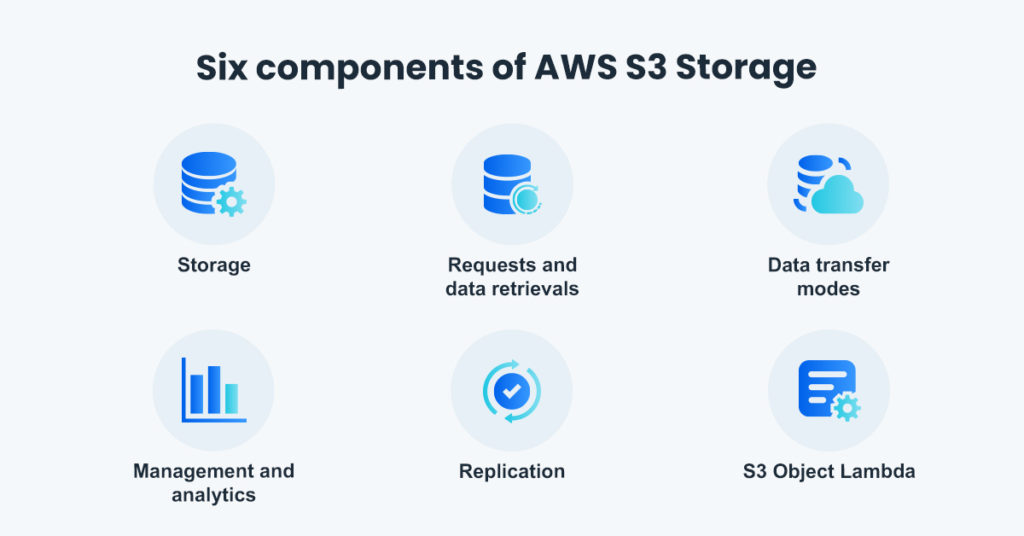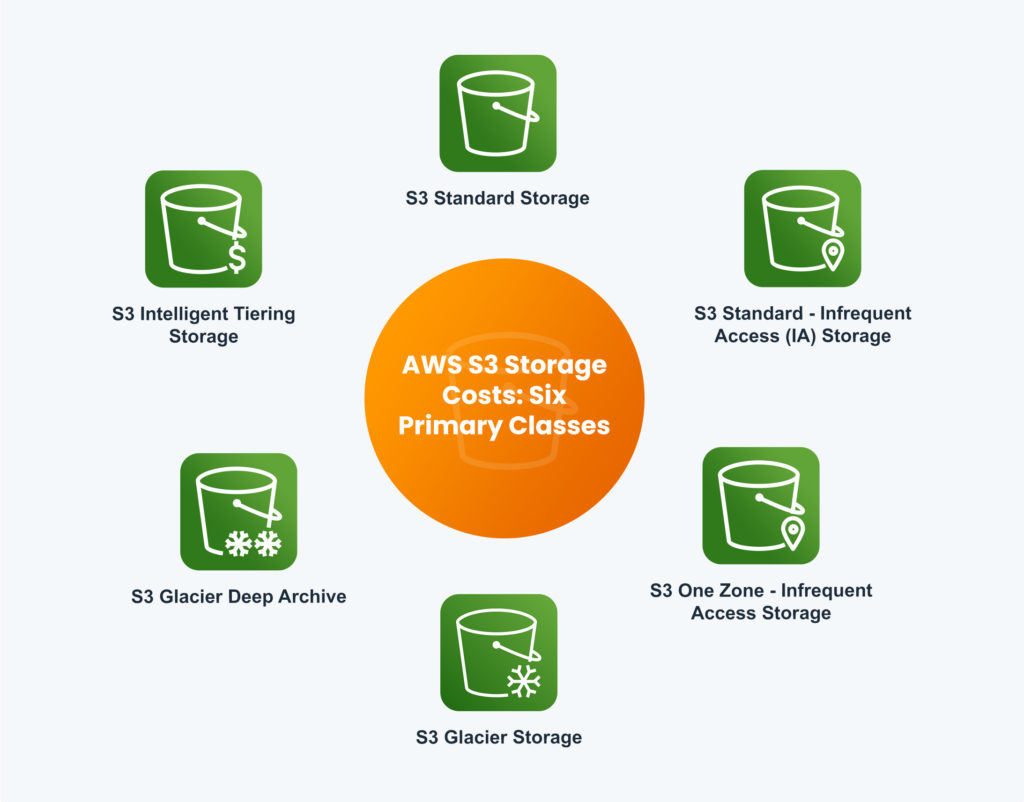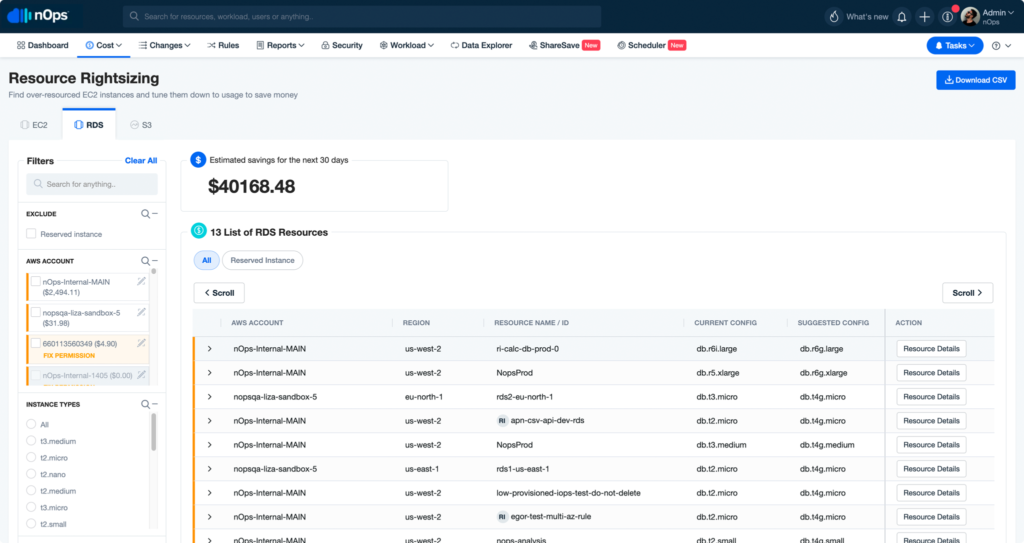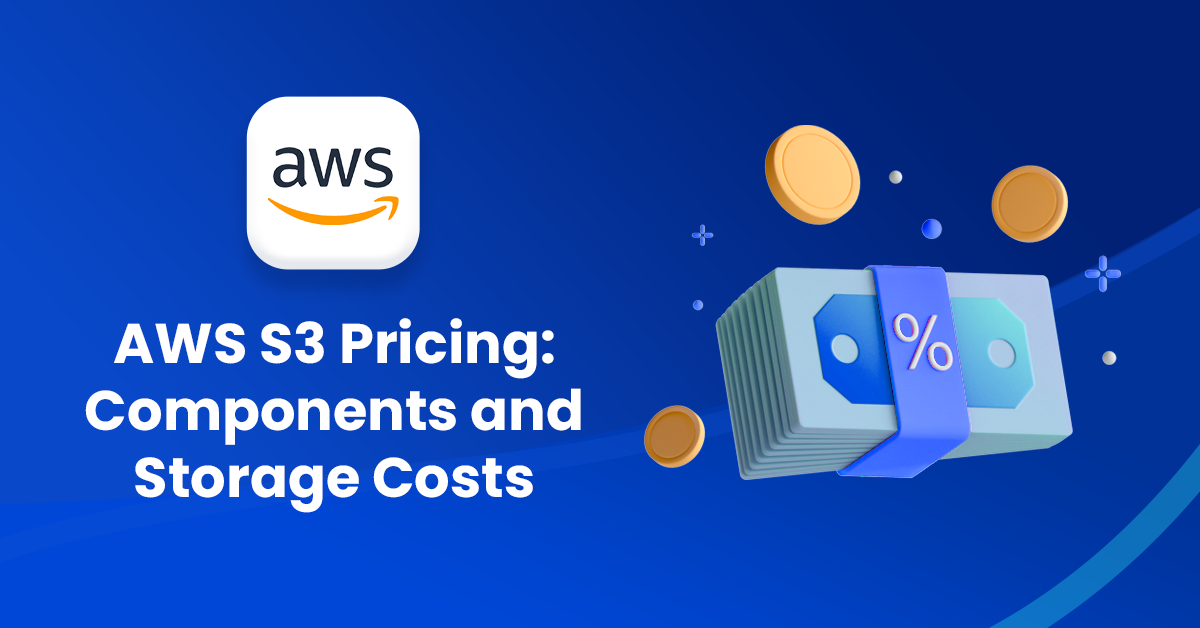The first AWS service to go live in 2006 was Amazon Simple Storage Service (Amazon S3). It is basically an object storage service offering scalability, security, availability, and performance. To meet your unique commercial, organizational, and compliance needs, Amazon S3 offers management options that let you categorize data and set access controls. Being one of the essential services for every business, the pricing bill for the AWS S3 can quickly accumulate. Thus, to help you analyze, maintain and manage your AWS S3 Bills, here’s everything you need about the cost structure.
The six components of AWS S3 Storage determine the cost structure
AWS S3 Storage has been segmented into six different components and each component impacts the ultimate cost structure to an equal extent. While taking into account the total S3 Storage costs, the platform analyzes the following factors of the 6 components:

- Storage: Gigabytes of Data stored
- Requests and data retrievals: Number of Data retrieval operations
- Data transfer modes: The type of model and data storage region
- Management and analytics: Types of management tools to be used
- Replication: Transitions occurring between different classes
- S3 Object Lambda: The data processed by S3 Object Lambda
What does the AWS S3 Cost Free Tier Option offer?
AWS Free Tier is a free alternative provided by Amazon S3 when a new user registers/signs up for the service. The free version is of course not enough for the enterprise workload, but it gives the users quite an efficient overview of the service, its features, and its utility. It is the first base you start with and step up with the premium plan. The free plan includes 5GB of Amazon S3 Storage.
Additionally, you will receive S3 Standard Storage buckets with a monthly GET request limit of 20,000 and a maximum of 2,000 LIST, POST, COPY, or PUT requests per bucket. With a Data Transfer Out limit of up to 15 GB per month, Amazon completes the package. There is so much to explore even with the free package. You just have to get started.
AWS S3 Storage Costs: Six Primary Classes
Storage is the premium component of the AWS S3 pricing and it contributes the most towards the total bill structure of s3 bucket pricing. Thus, for further clarity and segmentation, Amazon s3 pricing is divided into 6 storage classes. Different S3 storage classes support various use cases. The frequency of storage access and the required amount of redundancy are the main deciding factors. Here is a brief detail of each one of them:

- S3 Standard Storage:
This is the default S3 storage costs class for all S3 users. Because of its fast throughput as well as low latency, its buckets are appropriate for a wide range of use cases that call for frequent data access. We can observe that this class includes more than 93% of all objects. The backbone of Amazon S3 is S3 Standard. Additionally, Amazon has included this kind in its AWS Free Tier. Then, as you advance to the premium level, you have a choice of three S3 Standard Storage levels, each of which has a different price depending on the volume and location of your data. However, it is the most costly class per stored GB.
- S3 Standard – Infrequent Access (IA) Storage:
S3 Standard-IA is the optimum storage option for data that needs quick retrieval when necessary but is visited less frequently than the data stored in S3 Standard. It’s perfect for long-term backups, business continuity applications, and disaster recovery applications. Although its storage costs are lower discounted to 40–46% vs to S3 Standard, there are fees associated with data retrieval.
- S3 One Zone – Infrequent Access Storage:
Typically, the data is divided into the different available storage zones to ensure durability and high availability. However, with S3 One Zone, data is kept in a single AWS Availability Zone. This makes it appropriate for rarely accessed data that needs quick retrieval. However, it is not intended to be resilient to the actual loss of an AZ. Thus, if regional redundancy is not something you require, you can benefit from rates that are 20% less expensive than S3 Standard-IA for s3 bucket pricing.
- S3 Glacier Storage:
The primary purpose of this S3 Storage class is long-term data archiving. AWS S3 Glacier Storage is not capable of speedy data retrieval, in contrast to the other three classes. This S3 Glacier class is further divided between the two. The cheapest storage for long-lived data that is infrequently accessed and has to be retrieved in milliseconds is provided by Amazon S3 Glacier Instant Retrieval. S3 Glacier Flexible Retrieval, in contrast, offers comparable features but is only anticipated to be retrieved once or twice a year and doesn’t require instant access.
- S3 Glacier Deep Archive:
The lowest S3 costs option, S3 Glacier Deep Archive, is designed for long-term retention as well as digital preservation of material that won’t be frequently accessed. This s3 bucket pricing is suitable for disaster recovery and backup, but one of its best applications is for highly regulated sectors that need to keep data sets for legal compliance. The resolution of the subsequent retrieval requests could take up to 12 hours.
- S3 Intelligent Tiering Storage:
For cost optimization, S3 Intelligent Tiering uses built-in monitoring and automated features to shift data between such a frequent-access tier (FA) and an infrequent-access tier (IA). The use of Intelligent-Tiering means that you will not be charged for FA storage for data that isn’t frequently accessed; files kept in FA are charged at the S3 Standard rate, while those kept in IA are discounted by 40–46%. There is a monthly tracking and auto-tiering cost, but there are no fees for data retrieval.
How nOps can help optimize AWS S3 Costs

It is quite obvious that if the cloud costs are not regularly monitored and regulated, the bills of AWS S3 Pricing can be overwhelming. However, no matter how focused your team is to keep a check on the AWS costs, it is nearly impossible to eliminate all the unutilized ones. This is where nOps enters the table.
With our ShareSave solution, you can consolidate AWS cloud accounts into a single pricing model and offer ongoing visibility to change requests. This helps you easily manage cloud costs and save more money. Plus, with nOps Cloud Cost Optimization, you can save more by centralizing cloud accounts into a consolidated billing model, providing instant and continuous visibility to change requests and delta to your infrastructure that cause cost, and giving you the best root cause analysis capabilities available anywhere.
FAQS
[sp_easyaccordion id=”7519″]



